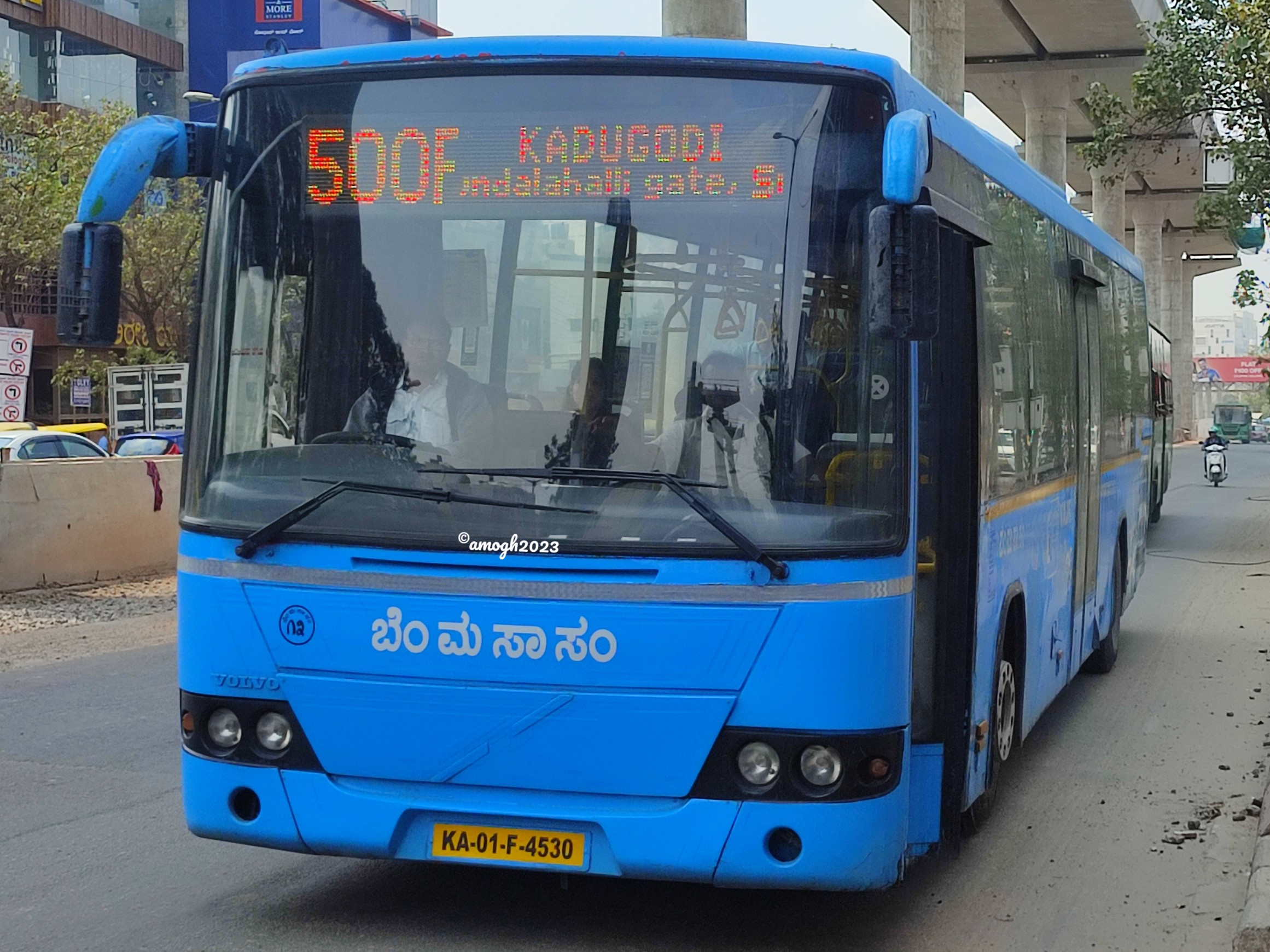The government has raised bus and namma metro fares by 15 percent and 45 percent respectively to alleviate rising operational costs. However, citizens and activists argue that this could make public transport less affordable amid soaring living costs.
Published Jan 12, 2025 | 10:41 AM ⚊ Updated Jan 12, 2025 | 10:41 AM

Karnataka government announces 15% hike on bus fares; Metro fares to see up to 45% increase.
Starting 4 January at midnight, Bengaluru’s public transport users faced a steep 15 percent hike in government-run bus fares.
This was applied across Karnataka’s four Road Transport Corporations (RTCs) — Karnataka State Road Transport Corporation (KSRTC), North Western Karnataka Road Transport Corporation (NWKRTC), Kalyana Karnataka Road Transport Corporation (KKRTC), and Bengaluru Metropolitan Transport Corporation (BMTC) – impacting city, ordinary, express, and deluxe/premium bus services.
The decision, as explained by Law and Parliamentary Affairs Minister HK Patil, is aimed at alleviating financial stress on the RTCs. “Our discussion considered a fare hike between 13 percent and 15 percent. The increase is essential to cover operational costs while continuing the Shakti scheme,” Patil stated.
However, critics argue that such measures undermine the city’s push towards sustainable mobility, particularly as Bengaluru is grappling with worsening traffic congestion and pollution.
Adding to commuter woes, Namma Metro is set to increase its ticket prices by 40-45 percent – the first revision in nearly a decade. The base fare will rise to ₹15, while the maximum fare will go up to ₹85 from the current ₹60.
A spokesperson for Bengaluru Metro Rail Corporation Limited (BMRCL) cited rising operational costs, expanded networks, and increased security expenses as key factors.
“We haven’t increased fares since the beginning, but the growing cost of operations and expansions necessitated this decision,” the official said, hinting at implementation within the quarter.
While the Shakti scheme offers free bus travel for women and transgender individuals domiciled in Karnataka, many still face challenges when travelling by other modes like the Metro or for those without Karnataka domicile.
For students who rely on public transport, the hikes are a severe blow.
“As a college student, I already have to manage on a tight budget. With this hike, I might have to cut down on other expenses,” said Sneha Rao, a second-year engineering student from Andhra Pradesh who commutes daily via BMTC buses.
“It’s ironic that the government promotes education but makes it harder for students to afford the commute. At the very least, we need a student concession,” said Ajay Kumar, a postgraduate student who travels by metro.
“The Shakti scheme is a huge relief for bus commuters like me, but not all routes are covered by buses,” said Meenakshi S, a homemaker. “Metro fares increasing by 45 percent is going to pinch, especially for women like me who use both modes of transport daily.”
Meanwhile, excluded from the Shakti scheme, male passengers also voiced their frustration.
“While women benefit from free bus rides, men like me who commute daily face rising expenses,” said Rajesh Kumar, an IT professional who relies on BMTC buses.
“The government should consider subsidies for all working-class people. I support the Shakti scheme for women, but men like me who commute daily are also burdened. The government needs to ensure equity in benefits.”
The tech workforce, a significant user base of Namma Metro, has similarly expressed dissatisfaction with the fare hike.
“Commuting by Metro was a convenient and affordable alternative to sitting in traffic for hours. But with fares going up, it’s becoming less economical,” said Arjun Nair, an IT professional. “We use the Metro daily, and this hike adds up to a big chunk of our monthly expenses.”
“It feels like public transport is slowly becoming a luxury rather than a necessity,” echoed Swati Das, another tech worker.
Meanwhile, Anil Verma, a shopkeeper in Majestic, worried about reduced customer footfall. “My customers, mostly daily wage workers, are already hesitant to travel because of the cost. This hike will only worsen things.”
Srinivas Alavilli, a public transport advocate, expressed disappointment over the timing and magnitude of the hikes.
“Increasing fares in a city flooded with 1.2 crore personal vehicles is poor policy. It risks driving commuters back to personal modes, worsening traffic and pollution. Less fares lead to more revenues, as Shakti demonstrated,” he said.
He urged the government to treat public transport as a public good, not a profit-making enterprise.
“Governments worldwide fund transport agencies, recognising their economic, social, and environmental importance. Bengaluru should follow suit,” he added.
(Edited by Dese Gowda)
